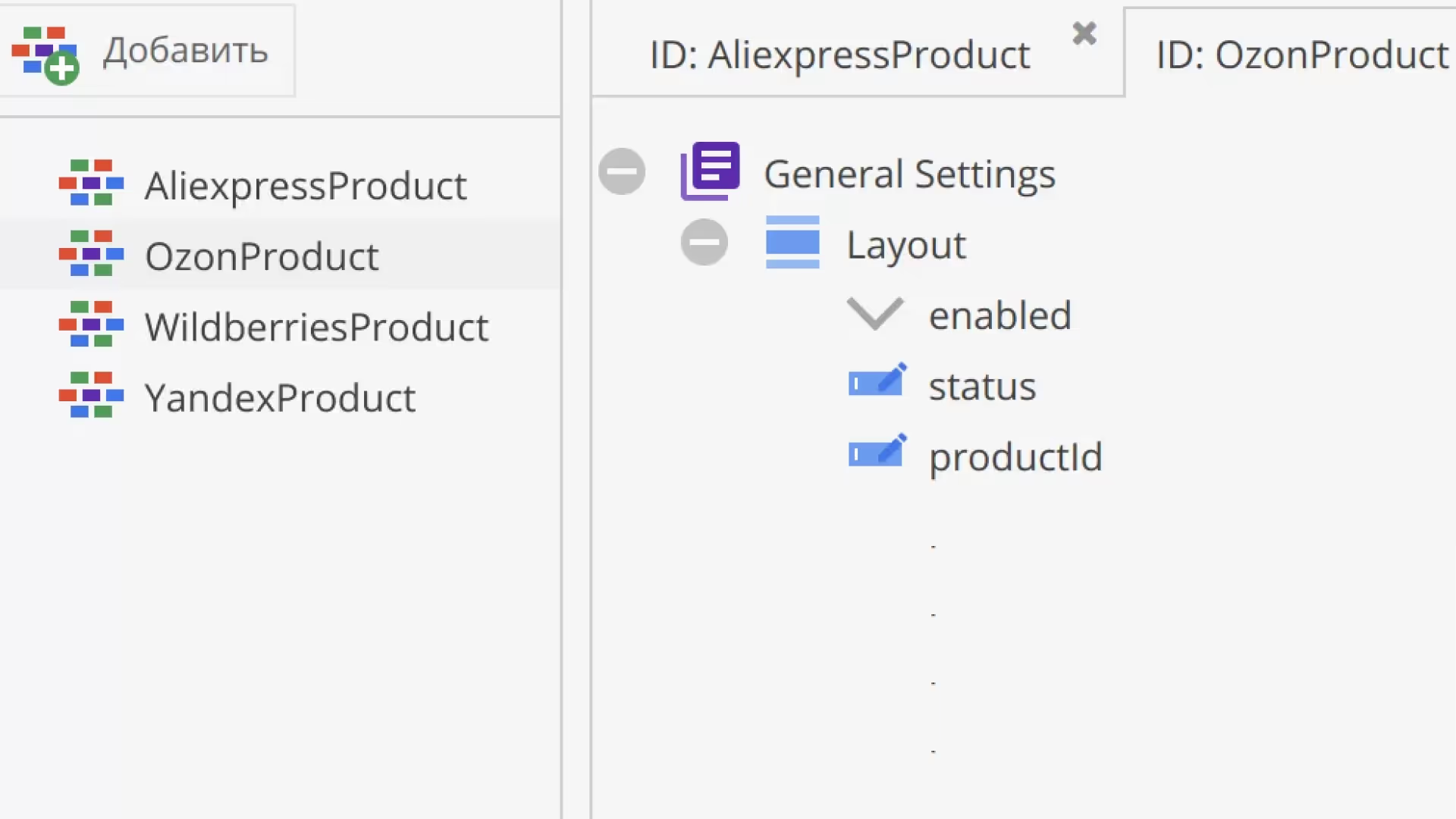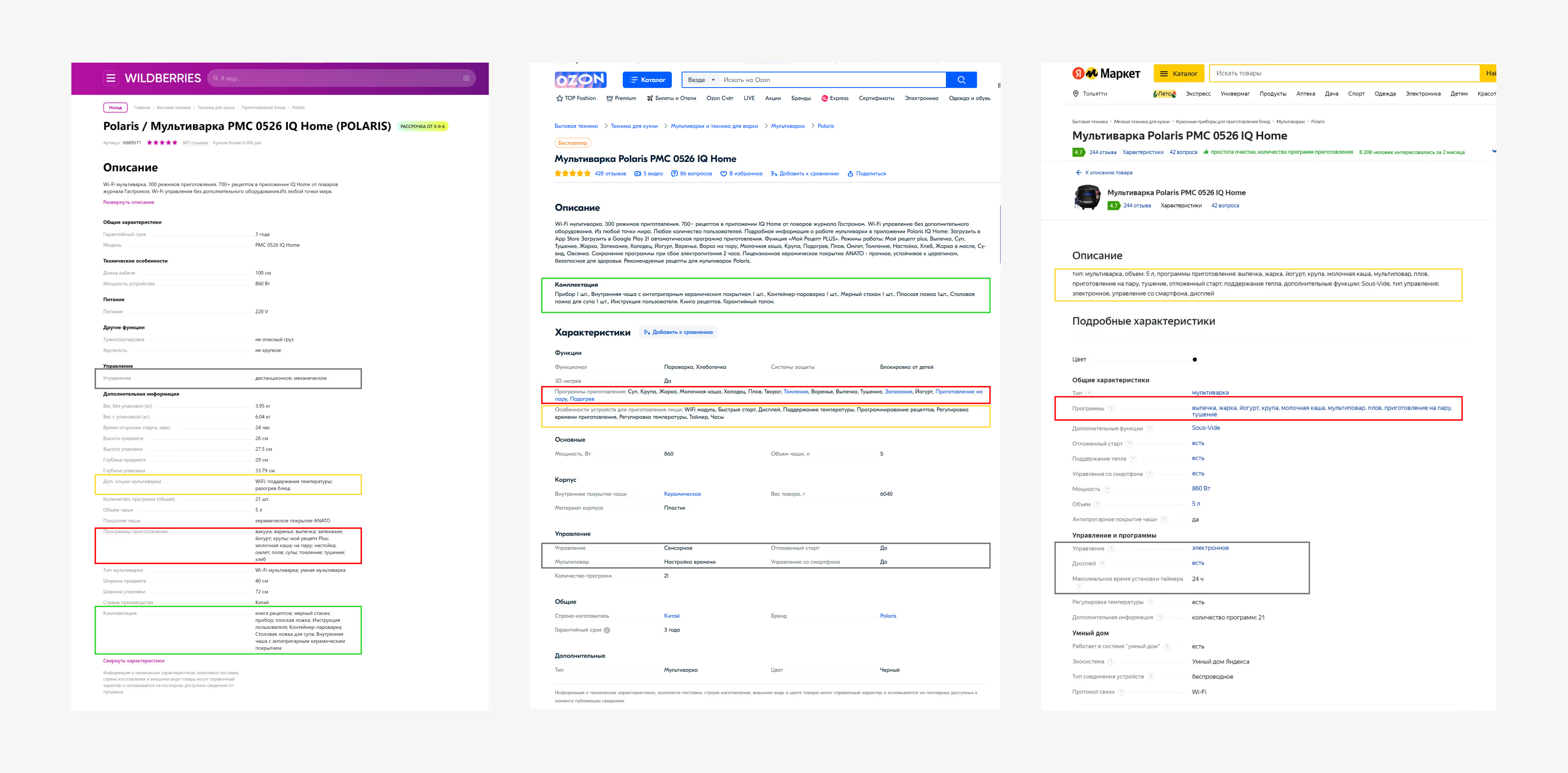In a manufacturing company, a product is always in the spotlight — in fact, its life cycle is the central business process for the entire company.
This affects both the IT circuit and the movement of information within it. If, for example, in a trading company, a product “originates” in procurement systems or in suppliers' personal accounts and everyone else relies on this record, then this is not the case.
Product information first appears in ERP (short from English enterprise resource planning, Russian. “enterprise resource planning”), PLM (abbreviated from English product lifecycle management, Russian. “product lifecycle management”) or MES (abbreviated from English manufacturing execution system, Russian. “production process control system”), that is, in systems tailored to production needs.
However, by definition, they are not designed to conveniently maintain information for sales and marketing. To meet the needs of marketing and commercial departments, e-commerce or sales departments, it is necessary to significantly redesign the same “1C” and overload it. Or take marketing information beyond its outline.
The answer to the situation may be a PIM system, which, in fact, is designed to store such information.
PIM system→ (abbreviated from English product information management system) is a master system that contains information about products and goods. The product card in the PIM system can contain more than 200 parameters:
- title;
- dimensions;
- materials or ingredients;
- commercial and technical description;
- equipment;
- execution options;
- warranty obligations;
- images and videos;
- documentation;
- user reviews;
- assembly instructions;
- information specific to individual sales channels, etc.
The PIM system allows not only to centralize the storage of information important for marketing and sales, but also to overcome at least five obstacles that prevent a manufacturing company from selling more.
Obstacle 1: the non-obvious process of updating product information in your own catalogs and sales channels
The more sales and distribution channels are involved and the wider the range of products a manufacturing company has, the more difficult it is to update information about these products. When responsibility for information is historically distributed across dozens of systems, people, and positions, any change depends on technical and human factors.
For example, the stationery manufacturer has a new line of notebooks, pencils, and erasers with cartoon characters. First, the company reached an agreement with the copyright holders of the characters as objects of copyright, then the designers developed a new design. The factory printed covers and sewed notebooks, painted pencil shirts, and created erasers in a new mold.
Upon a signal, the sales department should send information about the new product to all distributors and partners, separately stating that it is desirable to launch sales at the end of July, because August is the peak of sales of stationery for children. The e-commerce division must update information on its own website and marketplaces. Marketing will have to shoot promotional photos. And so on — the list of necessary actions can be endless.
Each of these actions depends on a variety of conditions and circumstances. Let us give examples of some of them.
- Who should inform you about changes or new products and at what point?
- Who should make the changes?
- What happens if a responsible employee takes a vacation or misses a signal? How can I make sure that the signal was received on time?
- How long does it take to make changes?
- Who do you need to coordinate with within the enterprise?
- Who should you ping on your partner's side?
- What should I do if Day X has passed and the information on the partner's website or marketplaces has not been updated yet?
- What should I do if the production of office supplies with a new design has already begun, but promotional materials for them are not yet ready?
If this process is not digitized, there are no deadlines for each of the stages and tools for monitoring, validating and receiving feedback, and it is highly likely that any of the mandatory actions will not be carried out. The information will not reach some distributors, or new notebooks will be published on marketplaces without preview pictures.
If you have a PIM system
The PIM system allows you to digitize the business process of working with product information.
How does this work?
- Assigning roles and assigning certain rights and areas of responsibility to these roles. A limited number of fields can be edited for each role; the rest can only be viewed.

- Reflection of the business process of working with product information within the PIM system: what is the sequence of actions, who is responsible for each stage, what can be the outputs of each stage.

- Change validation and verification tools: you will be able to designate who, how, when and by what parameters should validate each change.
And you no longer have to update information on sales channels manually: once the change is made and validated, the PIM system will trigger that will automatically update product information on sales channels.
Obstacle 2: creating a catalog for a new market (especially a foreign one) is time-consuming and expensive
Let's say you want to enter the Turkish market — your niche there is relatively free, and there is a need for a product, as confirmed by market research. Or better yet, you have been contacted by a potential distributor who is ready to take the goods for sale. But there is a caveat: the distributor's representative asks you for a catalog with names, specifications, composition in Turkish and prices in Turkish lira.
If you don't have a PIM system, product information is most likely distributed between ERP, sales and sales department plates, folders with photos and videos from the marketing department... This situation, in our experience, is typical: each department stores the part of product information it is directly responsible for.
To compile an up-to-date catalog, a manager will have to go through all sources of information, compile them into a single file, translate everything into Turkish (for example, using an online translator) and convert all prices. According to the most conservative estimates, a catalog of 10,000. SKU loads one manager heavily for three days, even if a transfer is not required. With translation, you can easily double the time limit, and the number of errors that are inevitable when copying manually by 10 times (after all, it's an unfamiliar language).
If you have a PIM system
With a PIM system, the process looks different.
- The manager does not have to collect information anew, since all product information is already stored in one source — the PIM system.
- You can be sure that the information about each product is up to date. The PIM system records the date of the last changes and the name of the user who made these changes.
- Current product images are also collected here, in product cards. You don't have to go to the marketing department for them.
- The functionality of most PIM systems provides support for multilingualism and the conversion of prices into different currencies. For example, Pimcore supports these features even in its basic Community Edition. This means that creating a catalog in the right language requires just a couple of mouse clicks: add attributes for the description and composition and start automatic translation for the right products or categories. In the same way, prices can also be converted in a couple of clicks.
- You can also create a catalog in PDF using the basic functions of PIM systems. At Pimcore, this feature is provided by the Gotenberg microservice, and at Akeneo, by the Akeneo Product PDF Generator module.
In total, the manager will spend a maximum of one working day creating and uploading an accurate, complete, reliable catalog in the right language.
Obstacle 3: Information on sales channels confuses customers
Customers, especially before making expensive purchases, conduct a kind of market research — even if they don't think in such categories themselves. What does the product look like, what functions does a hand drill have, what is the composition of the granola, what is the shelf life of the candy, is there a guarantee from the manufacturer for the shelf... The list of important questions for the buyer can be continued endlessly.
For all this information, the buyer goes online — to official dealer websites or marketplaces.
If the answers to the questions are clear, accessible and acceptable in essence for the buyer, he will decide to buy. What if it's not?
Imagine that due to some ridiculous accident (for example, because the content manager's finger flinched), different sites say differently about your product. On one site, the vacuum cleaner has two nozzles, on the other - three. Or the chair was photographed in different lighting conditions and seems greenish or beige.

The customer does not understand which source to trust and, as a result, does not trust anyone. But since customers don't think about the “internal kitchen”, they stop trusting not a specific marketplace or online store, but the manufacturer itself — after all, this is the only unifying factor.
If you have a PIM system
When you have a PIM system, it becomes the only reliable source of product information. All other systems and channels are secondary to the “golden record” from PIM and only take information from it in some format or combination of fields.
You can set up direct upload to sales channels — this is also possible in complex products such as Pimcore→, and in lightweight and less flexible systems like Brandquad. To do this, you must once configure the fields in the PIM system to match the fields in product cards on sales channels.

If direct integration is not possible for some reason, you can upload the catalog from PIM in convenient formats — XLSX, CSV, XML, etc.
As your systems become the source of information, photo and video content, discrepancies disappear. Now all sales channels will show three vacuum cleaner nozzles, and the upholstery color will match all visual materials.
Obstacle 4: negative product reviews due to misformed expectations
Here we will not talk about product quality issues — they are beyond the scope of this article. We will focus on how product information creates customer expectations.
Imagine: a customer needs a dresser that fits perfectly into a niche 135 cm wide and 50 cm deep. Among thousands of models, he finally chose your dresser after seeing its dimensions: 125 × 135 × 43 cm. A few centimeters of difference in depth does not bother him — after all, the drawers are retractable.
The purchase has been paid, the dresser has been delivered... but then it turns out that for some reason the dealer indicated the width of the drawer without taking into account the outer case, and on both sides the wall thickness is also added — 1.2 cm each. These fateful centimeters are crucial for the buyer. And they lead to disappointment, returns, negative feedback and other consequences that reduce sales of your products and damage your company's reputation.
And it doesn't matter anymore whether the site's content manager made a mistake by copying numbers from the wrong field, making a mistake, or deliberately showing this width, believing that it is more important. The review has appeared, and it will affect all future sales.
If you have a PIM system
With the PIM system, the influence of the human factor is minimized. You control what information is transferred to sales channels and in what form. Data is automatically transferred from your PIM system to dealer systems, marketplaces, etc. in the required volume and format. The human factor is eliminated due to automation.
For example, for one of KT.team's customers, a manufacturer of household and climate equipment Polaris, we we have configured the transfer of information about 1,000. Brand SKU for four marketplaces→. For this purpose, views (child cards) were created in each of the product cards for each of the marketplaces. The submissions take into account the requirements of the marketplaces themselves for organizing information. For example, to the format of illustrations or to recording the overall dimensions. The colors highlight the same information, which is presented differently in marketplace standards. At the same time, it actually coincides, which eliminates confusion and discrepancy between the buyer's expectations and the goods he received.

Obstacle 5: outdated certificates, licenses, files for advertising with distributors
Each product is accompanied by dozens and sometimes hundreds of media files. These are product photos and videos, PDF instructions, licenses and certificates, patents, advertising and marketing materials.
Most of these files have restrictions on their territory of validity (Russian certificates will not be valid, for example, in India) or by time. Contracts with commercial models have a limited duration; the product packaging design shown in the commercial photo is changing; certificates and licenses are scheduled to expire, or these documents may be revoked for other reasons, and the product is subject to recertification.
So that neither you, as a manufacturer, nor your distributors have problems or penalties, you should carefully monitor the use of only up-to-date files. This means regular checks in our own systems and disks where everything is stored, and constant contact with the distributor: whether he has everything, whether he uses the right photos and videos, whether the certificates are up to date on his website, etc.
This control requires a lot of effort both on your part and on the part of the distributor. But even so, you are not immune to human error.
For example, one of our clients before PIM and DAM system implementations → annually paid up to 3.5 million rubles to “stars” and modeling agencies involved in the filming of advertisements. Simply because regional offices unknowingly used photos in advertisements that were not intended under the contract for this region or for a specific advertising medium, as well as materials whose contracts for the use of which had already expired.
And these are just promotional materials! The consequences of using irrelevant certificates can be even more detrimental to both reputation and sales.
If you have a PIM system
When all media files (photos, certificates, licenses, patents) are linked to product cards in the PIM system, you control what gets into sales channels. Distributors will be physically unable to access outdated files.
But there is a risk that the dealer or distributor will “save” some of the old files and use it at will.
Therefore, for full control over media files, it is better to use a PIM system with a DAM module.
Bonus: If you have a DAM system
With DAM (abbreviated from English digital assets management, Russian. “digital asset management”), working with media files is becoming even more controlled. While in the PIM system as such, any media file is just an addition to the main product card, in DAM it is an independent content unit. Each image or video in the DAM system is described using metadata:
- which article is associated with the file;
- what exactly does the file contain (for example, it's not just a photo, but a side photo or a top view);
- when the file was created, uploaded, modified;
- when the allowed use of the file expires.
The DAM system will notify you that the file is about to expire, and may even block access to downloading an expired file.
For example, for the client from the case described above, we set up just this function: irrelevant files cannot be downloaded and watermarked, which prevents photos from being used for advertising purposes. The client saves 3.5 million rubles per year on fines under advertising contracts.
The DAM system can be integrated into the overall PIM circuit — like Pimcore and Brandquad — or it can be a separate system integrated with PIM “on a common basis”. This option is implemented in Akeneo.








